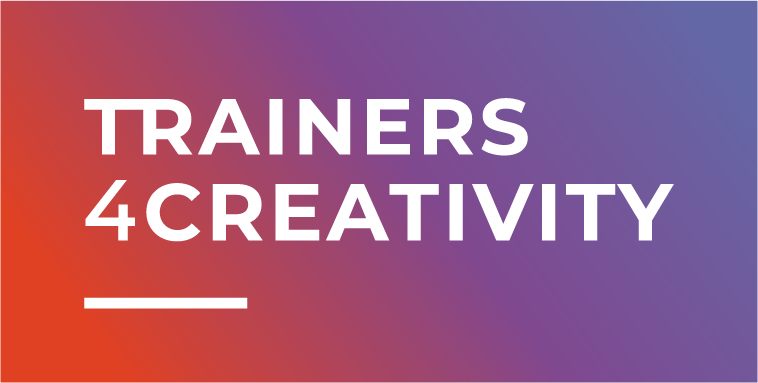Minecraft Education
Notice: Trying to access array offset on value of type bool in /var/www/vhosts/trainers4creativity.eu/httpdocs/wp-content/plugins/elementor/includes/base/widget-base.php on line 224
Notice: Undefined offset: -1 in /var/www/vhosts/trainers4creativity.eu/httpdocs/wp-content/plugins/elementor/includes/base/controls-stack.php on line 696
Synopsis
Minecraft is a sandbox game (a “Lego” game in a digital world), which was originally developed by a Swedish developer and is now owned by Microsoft, providing players with a great degree of freedom and creativity as there are no predetermined goals. A few years after the game was launched, a specific version of Minecraft has been developed for education purposes. This version has now 35 million licensed school users all over the world, mainly.
Though Minecraft Education is often used to teach “hard” skills (Mathematics, biology, coding, among others), the most interesting aspect of the game is that it allows kids of all ages to build something together. Indeed, this collaborative work will allow kids to gain project-management skills while learning to better communicate and overcome obstacles. It can be even used as a vehicle for social-emotional learning by letting each kid express himself in her/his vision in Minecraft and share it to the other kids.
Target Audience
The target audience is kids/teenagers from 10 to 15. Minecraft Education is meant for kids who are already familiar with the use of a mobile phone/tablet/computer, which starts around 8-10 years old. We believe that above 15, kids will gradually find Minecraft less appealing as they will start to play games with more sophisticated graphics and stories. In the case studies provided by Microsoft regarding usages of Minecraft Education, the kids are aged from 10 to 15 (US grades 5 to 10).
Goals
- Use Minecraft in an innovative way so that kids can develop soft skills and bond together
- Provide educators a flexible tool to connect with the kids and teach them diverse topics
Skills developed
Hard skills:
Minecraft Education has been primarily developed to teach “hard” skills as sessions can be targeted to specific topics such as coding, mathematics or English composition.
Soft skills:
However, soft skills can also be developed, by working collaboratively:
- Communication
- Information and communication technology literacy
- Creativity
- Critical thinking
- Problem-solving
Why is it a good practice in the digital area?
With 738 million players worldwide, Minecraft is one of the most popular games worldwide. Therefore, many kids will already be familiar with the game, which will facilitate the onboarding process and raise the interest of the kids.
Many case studies and research made in schools are backing the benefits of using Minecraft Education. This paper in particular was interesting to show that using Minecraft as an educational tool in classes facilitated collaborative learning processes and enabled development of 21st century skills.
Moreover, Minecraft Education is incredibly versatile. Being open-source, many lessons are already available to reuse. A community of educators is also available on the platform to exchange ideas and best practices on the different classes or workshops provided.
Furthermore, being a digital tool, Minecraft Education is also something that kids can easily continue on their own or with friends. In fact, during covid lockdowns, there has been a spike of use of Minecraft Education when kids were not able to go to classrooms.
Training Team
One person can be enough to supervise 6 to 8 kids. This person needs to be familiar with Minecraft and needs to set-up the session beforehand (in the game itself but also on the different computers for the kids).
Duration proposed
A 2 to 3 hours session is optimal:
- 30-45min to explain how Minecraft works, what they need, let the kids create an avatar…
- 1h – 1h30 of collaborative work to build together what they need to do (with a break in the middle)
- 15min – 30min to conclude the session and share the results, fine tuning minor points and discuss how the collaboration went between everyone
Prizes / recognition received
Minecraft’s popularity and its endorsement by prestigious organizations is a proof of its recognition. For example, they have recently created specific sessions with the WWF and the Nobel prize organization to create lessons on animal conservation and the peace builders around the world.
Promoting Organization
Minecraft education is currently owned and managed by the Microsoft Corporation.
A large array of schools are already using Minecraft Education in the USA and it is growing rapidly in Europe as well. Minecraft Education has notably engaged in a partnership with STEM Alliance, the EU network of 33 European Ministries of Education, to launch a European competition. In Belgium, a MINECRAFT Education Academy has also been created in partnership with the ministry of Education.
Starting Year
The initial game was originally created in 2016 but it was made available to iPad at the end of 2018, to Android tablets in 2020 and to mobile devices in August 2022.


